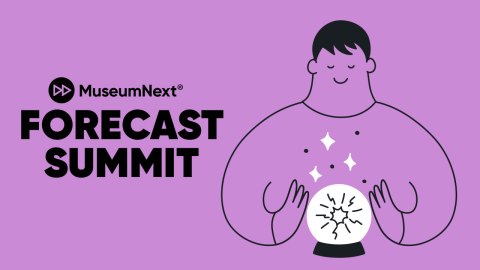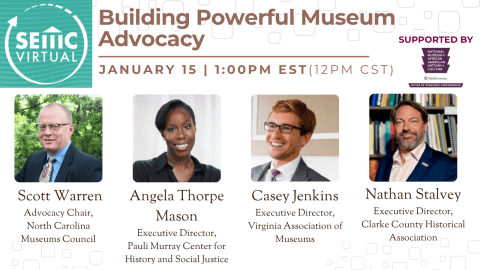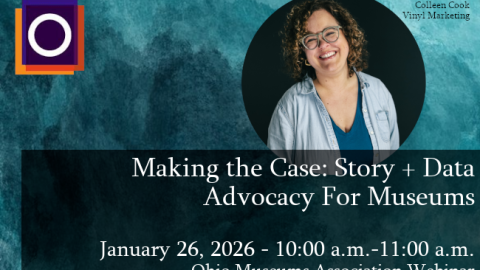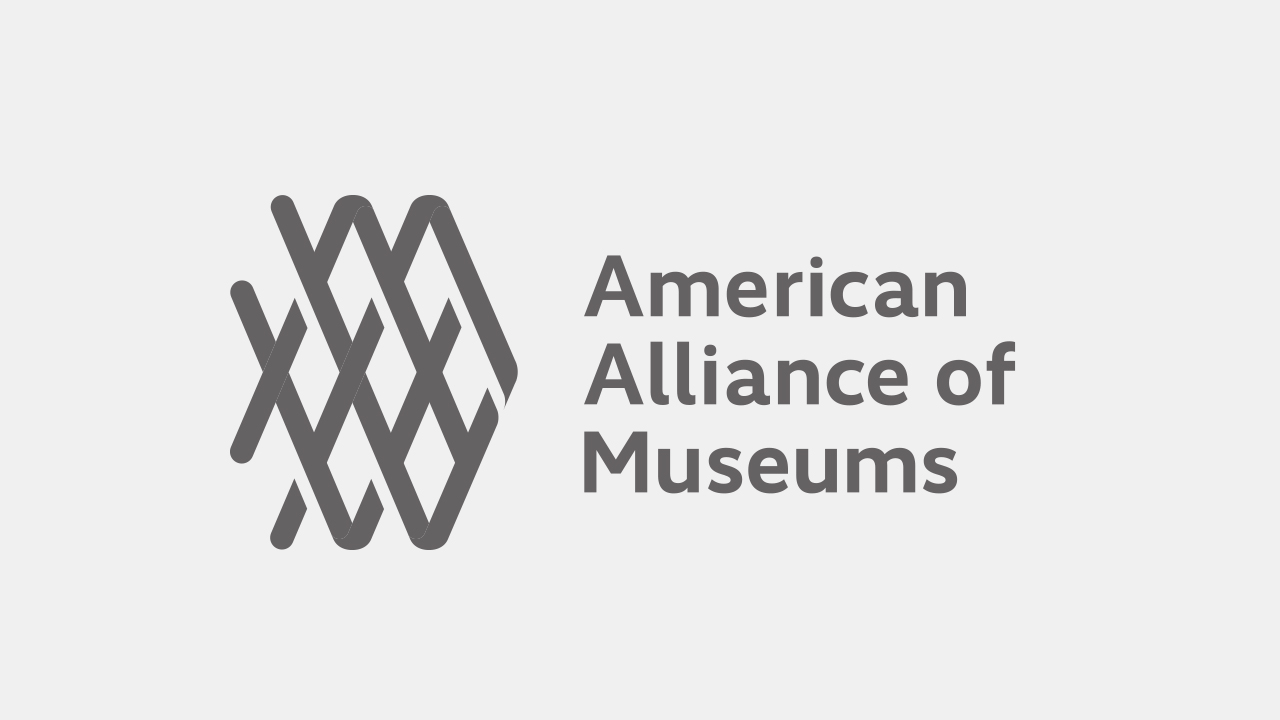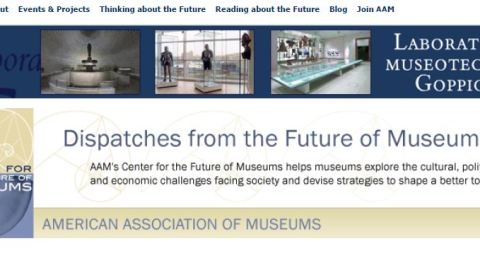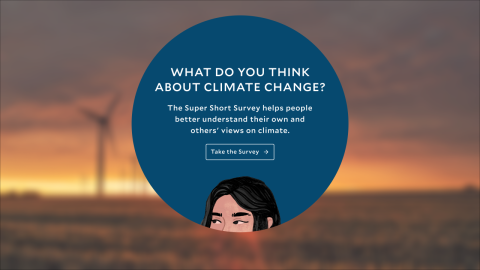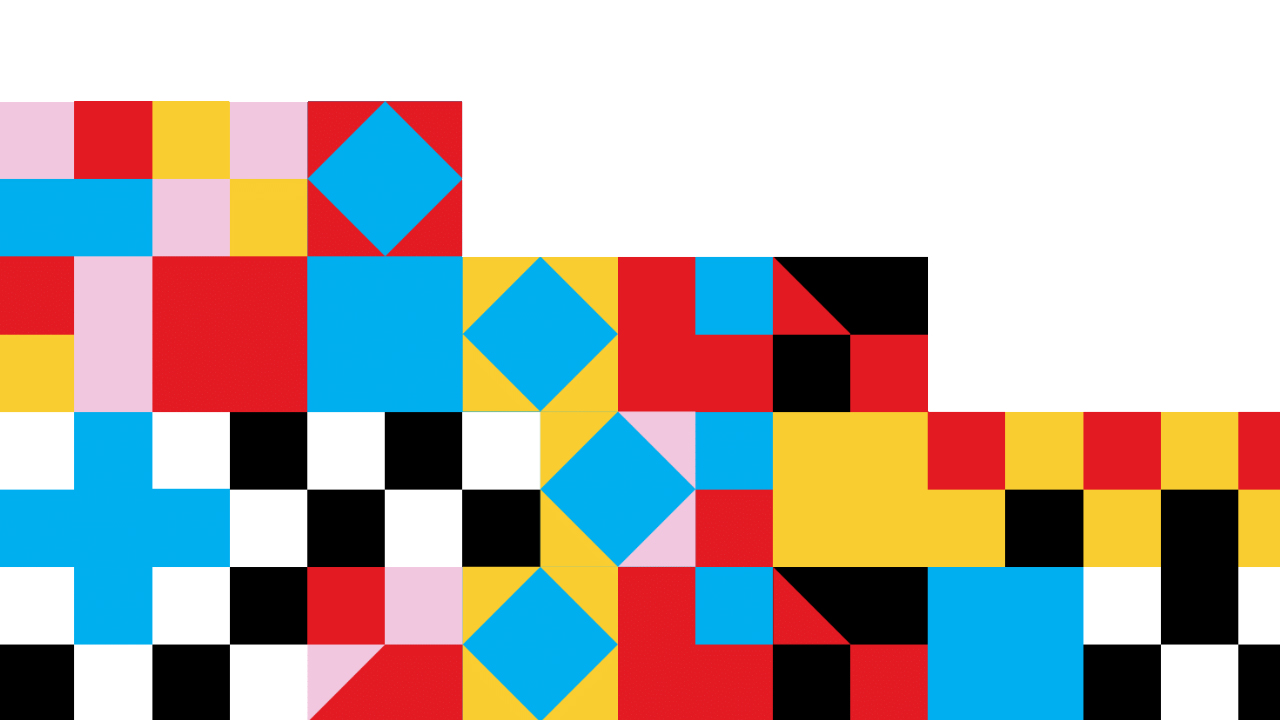
Three guest Native/Indigenous curators at the IU Museum of Archaeology and Anthropology reimagined collections obtained through extractive and colonialist practices.
This article originally appeared in Museum magazine’s May/June 2025 issue, a benefit of AAM membership.
What is a museum if it does not serve its community? Museums are responsible for linking communities to the collections they steward. As museums’ forward-facing work, exhibitions and curation are the primary pathways for making these connections. Exhibitions can tell people’s stories, highlight materials, transport visitors through time, and create space for community and reflection. However, they can also unintentionally replicate years of colonial harm and isolation. These truths coexist in museums.
Across the country, museums and exhibition spaces, regardless of size and discipline, are rethinking their approach to curation. Through shared stewardship and community-led and culturally relevant curation, museums can provide space and support for community stakeholders and descendant communities to tell their stories and share their history authentically. This is what the Indiana University Museum of Archaeology and Anthropology (IUMAA) sought to achieve when it invited three Native/Indigenous curators to create a hybrid virtual and physical exhibition connecting 20th-century image collections and wax cylinder recordings of Indigenous peoples stewarded by the Library of Congress and Indiana University.
The invited curators, Debra Yepa-Pappan (Jemez Pueblo/Korean), Molina Two Bulls-Parker (Oglala Lakota/Northern Cheyenne), and Yatika Starr Fields (Osage/Muscogee Creek/Cherokee), reimagined the museum’s collections—originally created through extractive and colonial practices that bolstered “the Vanishing Indian” myth—to tell their own stories. The result of their work is the IUMAA exhibition “Through Our Eyes: A Reclamation.”
What the Guest Curators Created
In “Through Our Eyes,” the three guest curators created works of art that reinterpret the Edward S. Curtis and Joseph K. Dixon photography collections, held at the Library of Congress and Indiana University, respectively, and sound recordings from the Archives of Traditional Music held by IU Libraries. Recognizing that the Curtis and Dixon collections were originally produced through extractive and colonialist means, this project seeks to redress colonial harm by prioritizing the guest-curators’ visions, centering Indigenous perspectives, and uplifting source community voices.
The physical exhibition, on display from August 26, 2024–June 21, 2025, at IUMAA, features an original black-and-white film with mixed audio; a painted, stretched canvas flag atop a white oak pole; four handmade dolls with beaded accessories standing in front of a modern star quilt; a colorful, printed digital collage; and a case with old and new recording technologies.
To build the virtual exhibition spaces, which are accessed via the IUMAA website, the University Information Technology Services Advanced Visualization Lab (AVL) collaborated with the guest curators. The AVL team took 3-D scans of material culture, including the created artworks; visited Oklahoma to map a culturally significant location under Starr Fields’ direction; and built the virtual gallery spaces in alignment with the guest curators’ creative vision.
Visitors to the virtual exhibition start in an introductory hall with explanatory text before portalling through a 1903 camera where they can explore the curators’ realms. Starr Fields’ virtual spaces play with size and scope in a way that would be difficult to replicate in the real world; Yepa-Pappan stages her virtual art in a Puebloan kiva floating above the Chicago skyline; and Two Bulls-Parker locates her dolls in a tipi surrounded by wide-open, rolling plains.

Fostering Community and Building Trust
From the outset, IUMAA committed to honoring the guest curators’ direction, authority, and creative vision. At every step of the project, museum staff sought to build trust with the curators. IUMAA invited the curators to participate in the exhibition in a letter that detailed the transparency and accountability that would inform the project. The letter included (1) the project details, (2) timeline and deliverables, (3) compensation in the form of monthly stipends instead of hourly wages, (4) a recognition of the coloniality of the collections they would work with, and (5) IUMAA’s commitment to honoring and privileging the curators’ vision, direction, and expertise. The museum conducted monthly check-ins to ensure these commitments were being upheld. In these check-ins, the curators could suggest changes or ways the IUMAA could better support their diverse needs.
Recognizing the importance of in-person collaboration and communication, IUMAA brought the curators, who lived across the country, to the university in March 2024 to work with the collection materials, meet the university teams who would assist on the project, and build community. This visit included time and space for the curators to reflect on how immersing themselves in the collections’ history would shape their curatorial approach to the exhibition.
Yepa-Pappan, a contemporary multimedia artist and curator specializing in photography and digital collage, connected most to “the moments of imperfection that show humanity.” She experienced such a moment while listening to a Pueblo recording in which the singer’s voice cracked. The singer then coughed and, instead of continuing the song, paused to laugh. It was one of the first times Yepa-Pappan had heard Native laughter in ethnographic recordings in museums and libraries. Such moments were rarely preserved by non-Indigenous recorders. This highlighted the importance of who decides what is valuable—what should be recorded and preserved—and how these decisions affect present and future generations. As Yepa-Pappan shared with the curatorial team, this was a telling example of how colonial values can counteract what is meaningful to Native/Indigenous communities.
Two Bulls-Parker, an artist specializing in beadwork, quilting, and handmade dolls, had a similar experience when viewing the photographs taken by Joseph Dixon in IUMAA’s Wanamaker Collection, which includes more than 8,000 images of Native Americans taken during three expeditions between 1908 and 1921 that were sponsored by department store magnate Rodman Wanamaker. She noticed a small child in a staged group photo who was picking his nose. “Kids will be kids,” Two Bulls-Parker laughed, no matter the where, when, or culture. She found inspiration in the relatable and lighthearted moment, which both subverted and highlighted the photos’ underlying coloniality. The staged images were produced to align with stereotypical colonial expectations of how Native/Indigenous peoples were “supposed” to look; however, control is always relative. To her, the innocent act of picking one’s nose demonstrated a quiet act of defiance against white supremacy and colonial assumptions that occurred throughout history, among even the youngest relatives.
Starr Fields, a painter, muralist, street artist, and community activist, connected to a series of landscape and cloud study photos as well as a Wanamaker expedition flag. He coordinated the digitization of an environment in Oklahoma that has deep cultural connections to him and his tribal community, using these images as the setting and background for his virtual exhibition. His curatorial practice centered on the Wanamaker flag and its power as a symbol of coloniality representing genocide through expansion, statehood, power exchange, distress, and performance. In response, Starr Fields created his own flag, pouring his new story into this symbolic vessel in an effort “to talk about who we are and provide that narrative in an Indigenous way.”
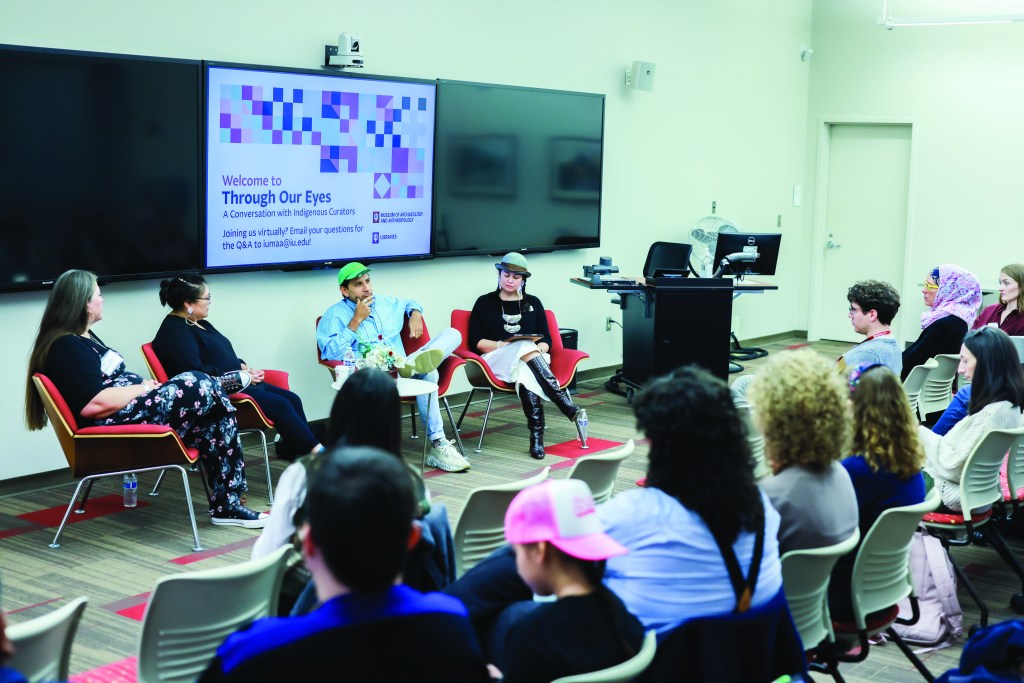
A Community Curator–Led Process
From the exhibition title to the graphics, colors, design, and installation, the Native/Indigenous curators had full creative control. They deliberately chose not to name the original colonial collectors in the exhibition, instead drawing inspiration from the photographs of their community members and the land to create their artwork.
The title of the exhibition, “Through Our Eyes: A Reclamation,” references looking through the camera but with a Native/Indigenous lens. The exhibition logo, a colorful stepped mosaic, was inspired by Two Bulls-Parker’s beaded cuffs—with her consultation and consent. The curators selected the exhibition’s bright colors to both demonstrate that Native/Indigenous communities are thriving and directly contrast the stereotypical black-and-white photographs in museums and history books.
IUMAA staff supported the curators’ creative vision while navigating the rigid administrative systems at Indiana University and the Library of Congress. For instance, payments to the curators shifted from honorariums to stipends when navigating the online payment portal became a bureaucratic tangle of forms, approvals, and unfamiliar websites that halted work; transitioning to invoices smoothed the process for curators. Some vendors couldn’t recognize reservation addresses, so IUMAA worked with university administrators to adapt policies that inadvertently harmed Native/Indigenous communities in rural reservation lands.
Throughout the exhibition’s development, museum staff learned to pause, honor the creative process, sit in the discomfort of the unknown, and relinquish power dynamics embedded within museums and academia. The commitment to the curators meant timelines shifted, goals changed, new ideas led down branching paths, and personal lives intertwined with work lives. We’re all human, and flexibility is critical. In the end, museum staff, community curators, administrators, and project collaborators all worked together to bring this exhibition to life. With “Through Our Eyes,” the paradigm shifted from the museum being in charge of the exhibition to staff serving as conduits and support systems for a community’s vision.
Museums, galleries, archives, and libraries must leverage their privilege to amplify community voices. IUMAA created safe spaces for Native/Indigenous community members to interact with collections, express their needs through conversation, and prioritize their perspectives, knowledge, expertise, and creativity. When museums authentically build relationships based on trust, the results can be beautiful and transformative.
Telling a Community’s Stories
At the Evansville African American Museum (EAAM) in southern Indiana, Tory Schendel-Vyvoda collaborates with the Black descendant community, which runs the museum, throughout the curatorial process—from documenting local histories to micro-fundraising. A recent exhibition, “Black Heritage in Racing: A Baptisttown Focus,” highlighted the significant contributions of Black jockeys, trainers, and horse caretakers from the early days of US horse racing, focusing on the predominantly African American settlement of Baptisttown. Using local storytellers and memoirs, the exhibition described these ancestors’ experiences working for the Kentucky Derby and how the event impacts their communities today.
Exploring Native Identity
At the Center for Native Futures, Debra Yepa-Pappan, Co-founder and Director of Exhibitions & Programs, and her team work to correct inaccurate representations of Native peoples by advocating for the inclusion of Native first voice and perspectives. The Native-led institution in Zhegagoynak (Chicago) promotes the advancement of Native fine arts and fosters relationships through exhibition, artist residencies, and community events, using art to learn from the past, nurture the present, and realize a thriving future.
The Center for Native Futures recently showcased Elisa Harkins’ (Cherokee/Muscogee) “Teach Me a Song,” a living project installation rooted in Indigenous language revitalization and song preservation. The exhibition explores the complex relationships between music, memory, and cultural sovereignty; the intergenerational transmission of knowledge; and the role of song as a vessel for cultural continuity.
